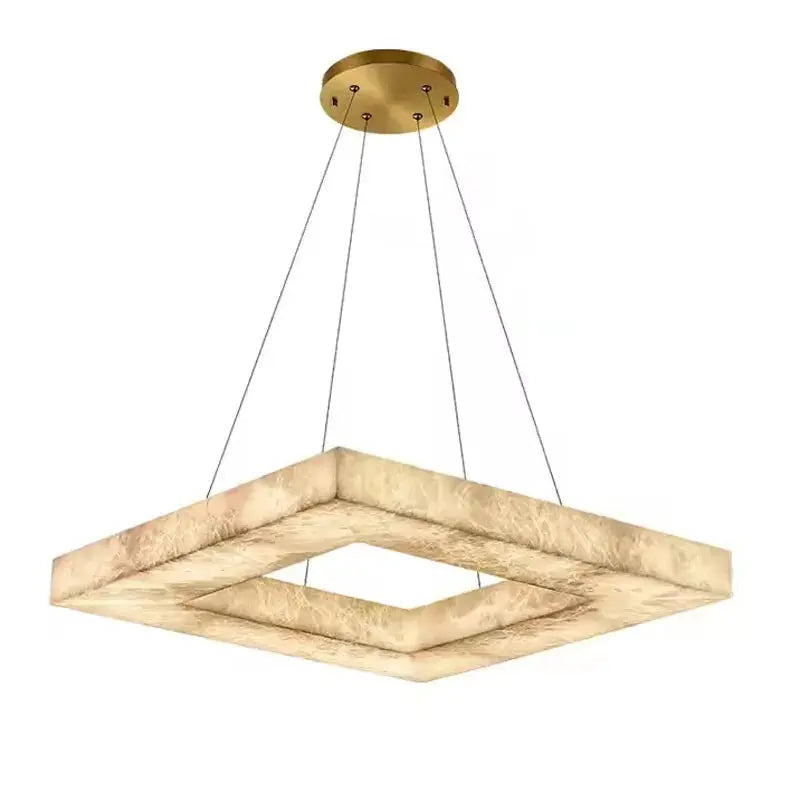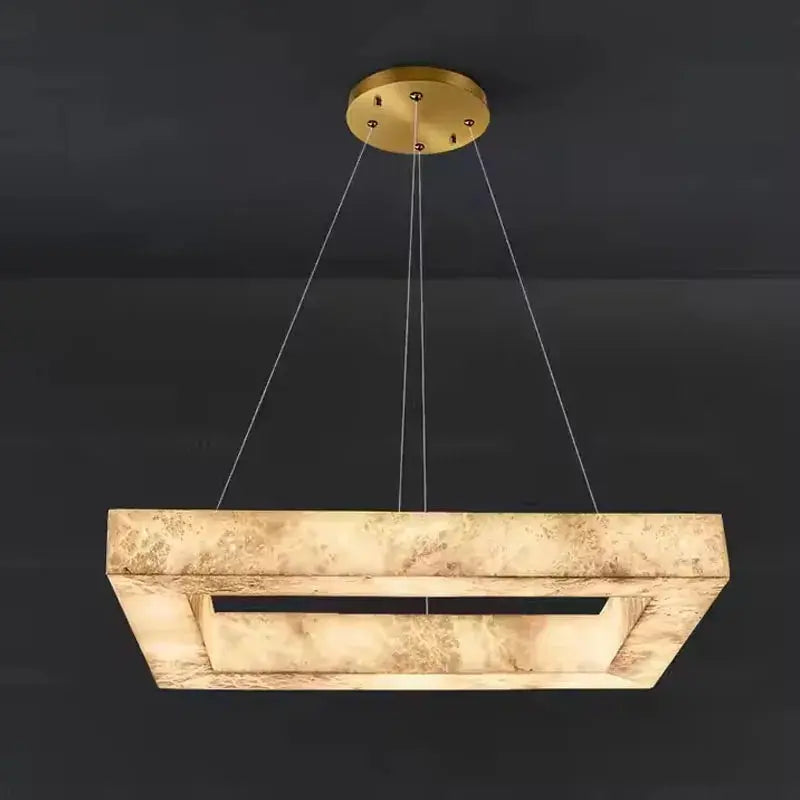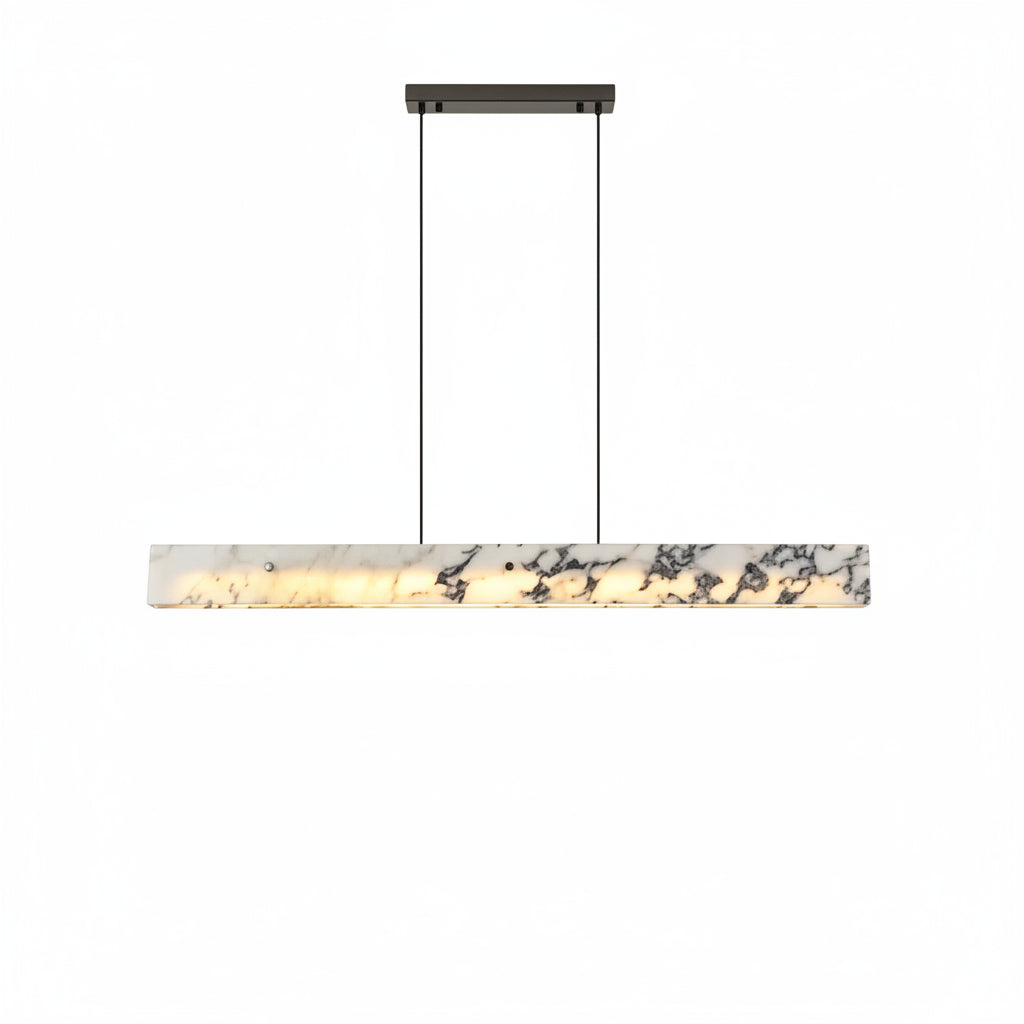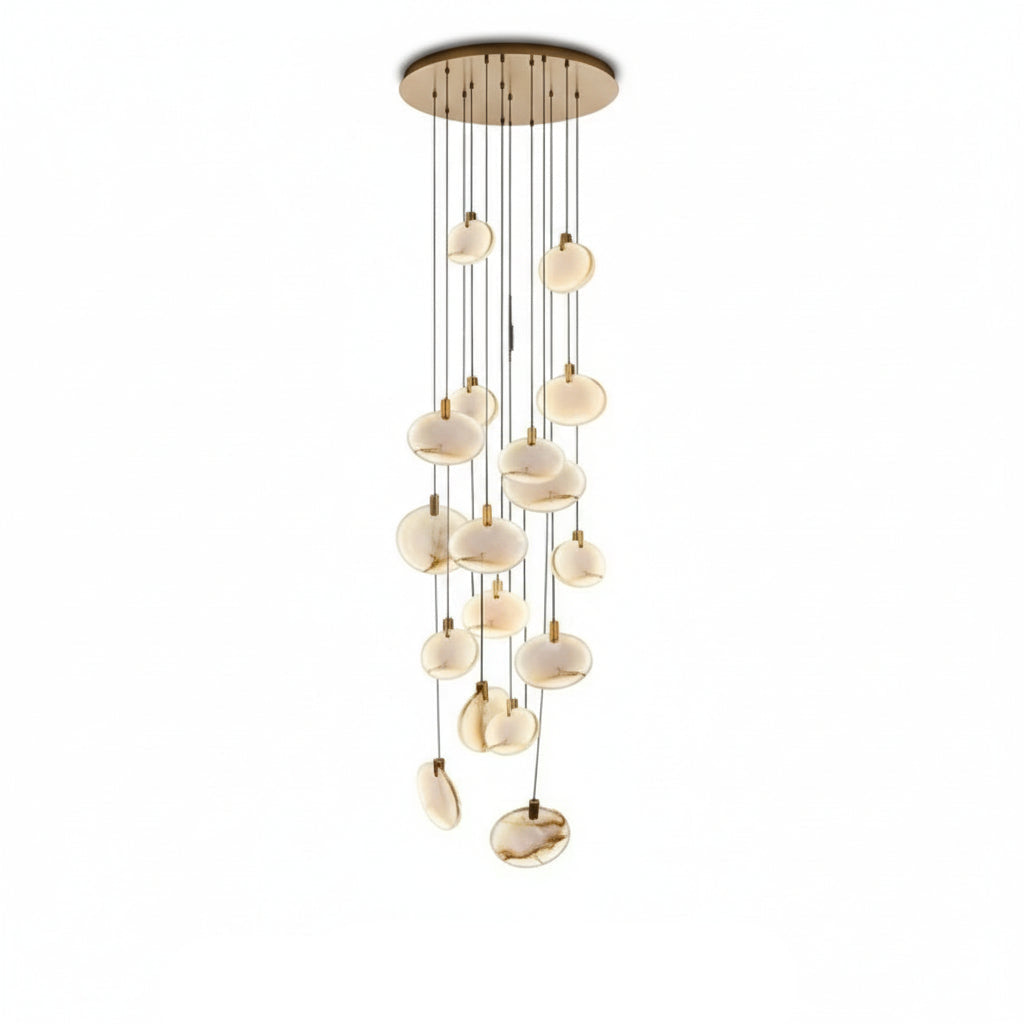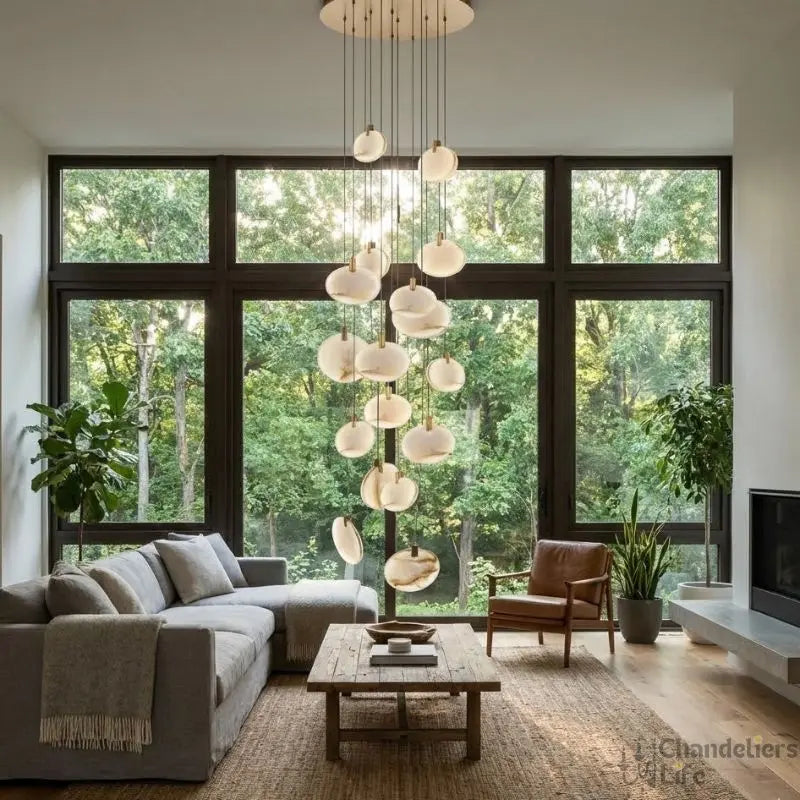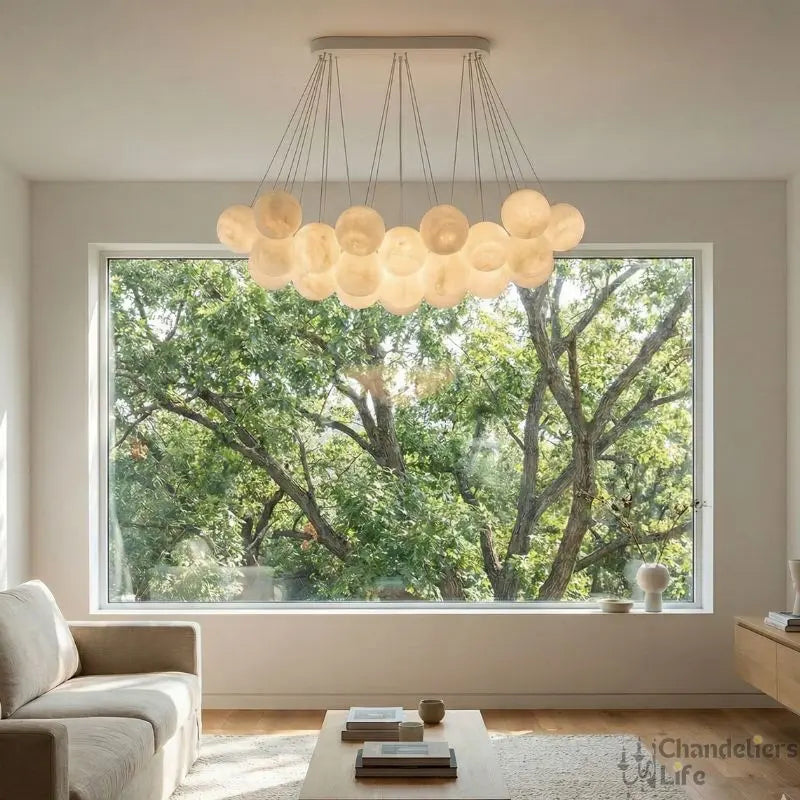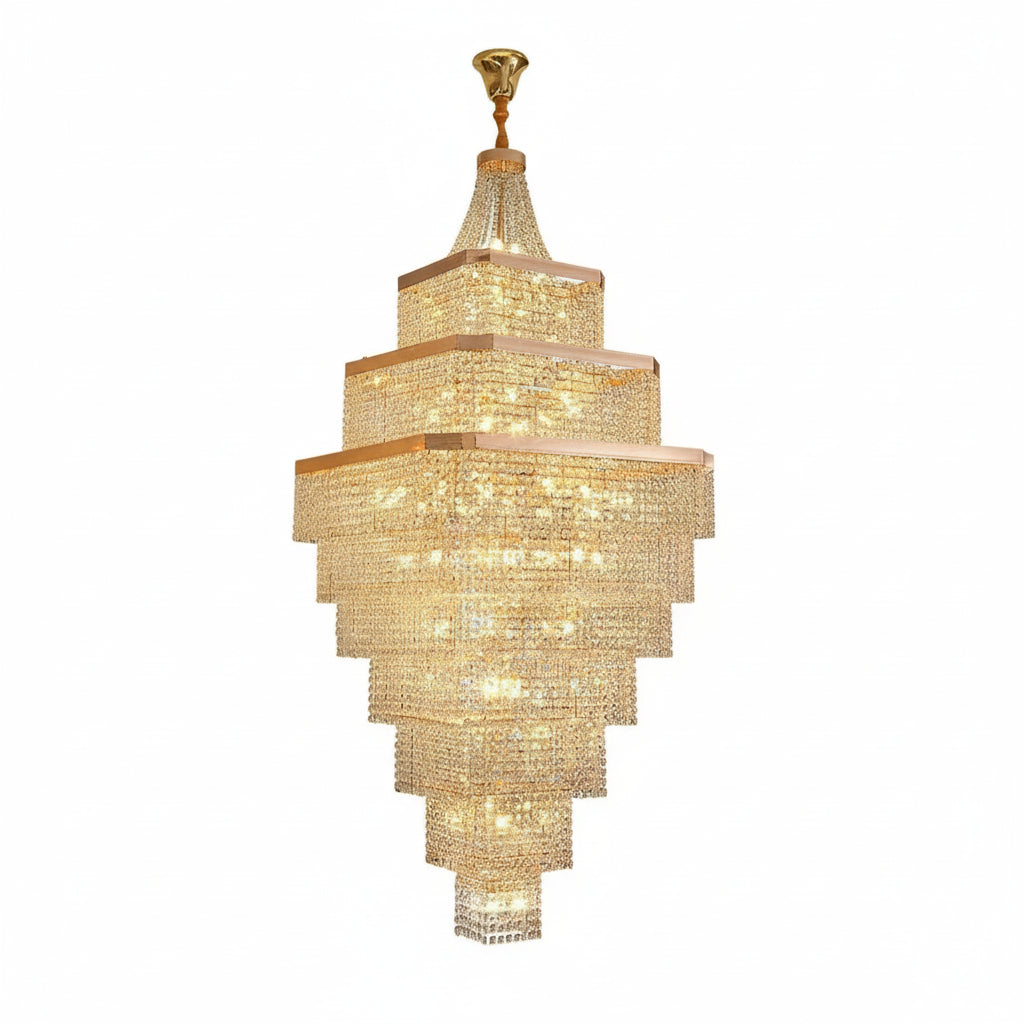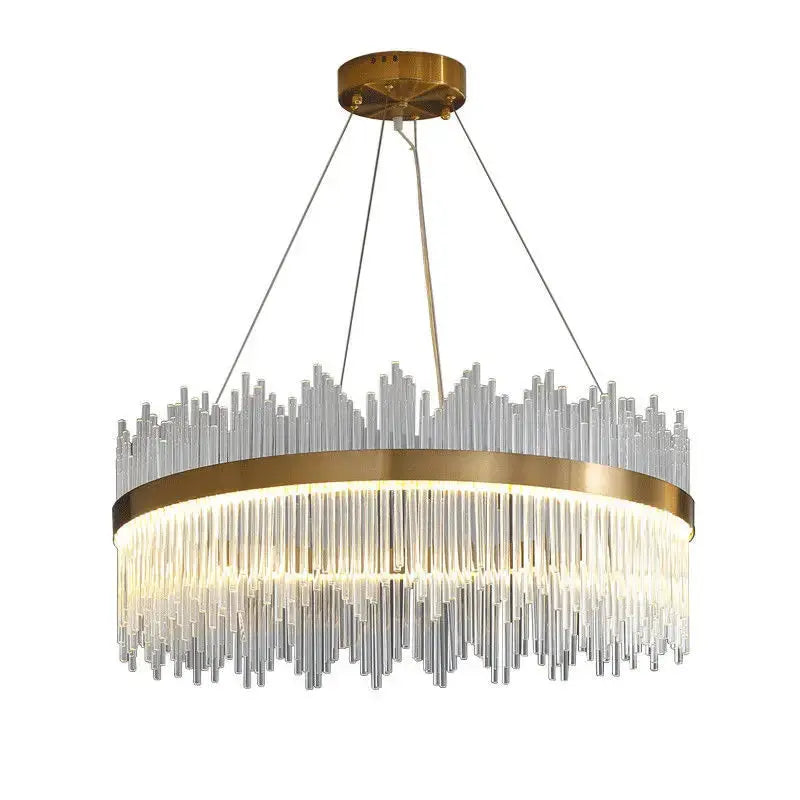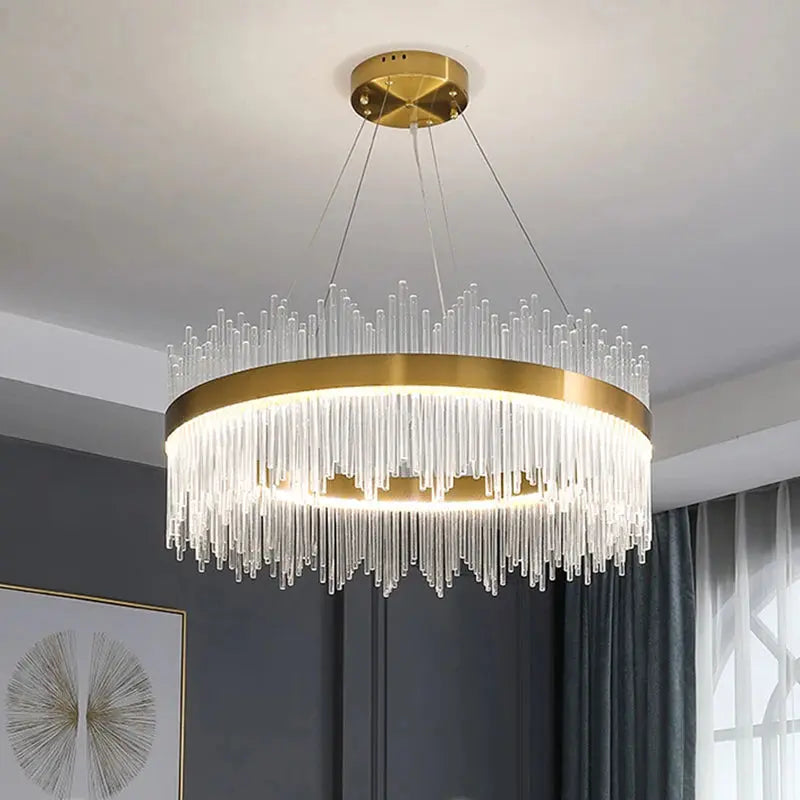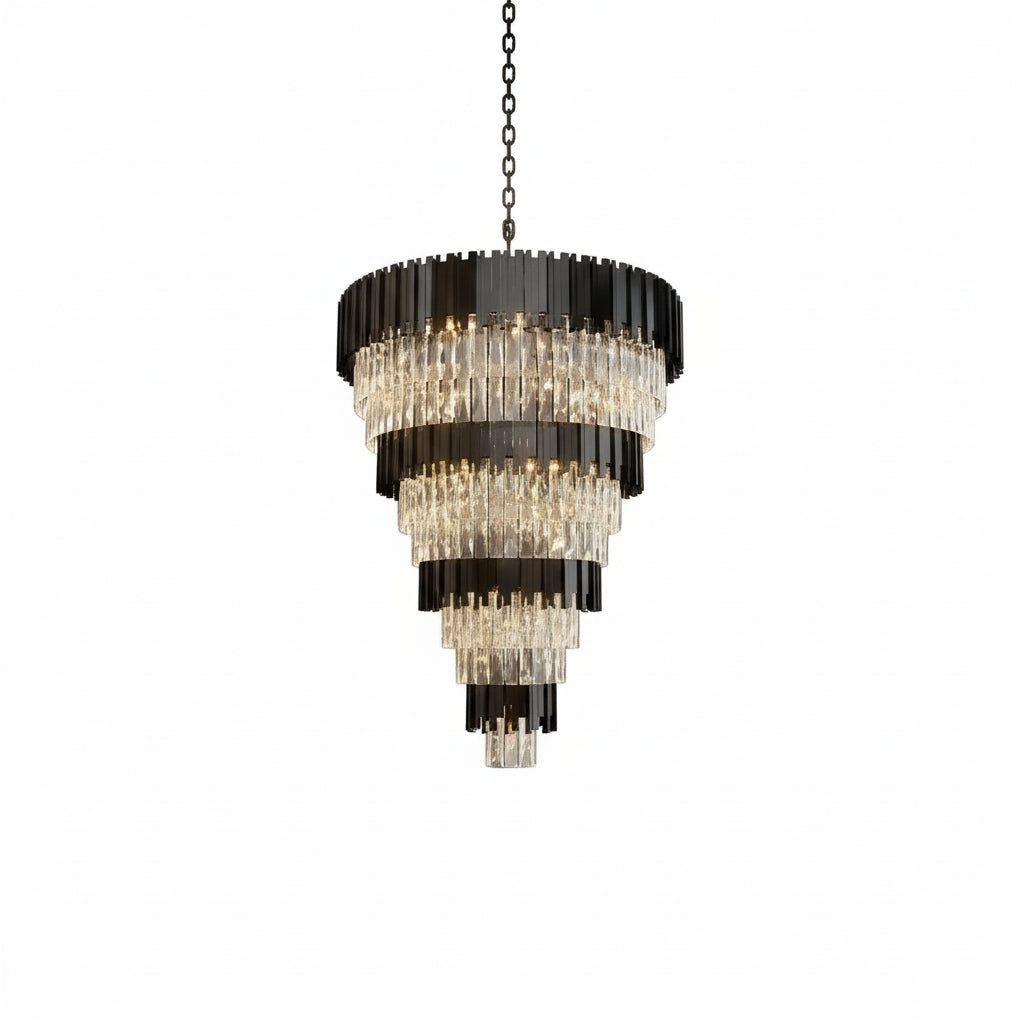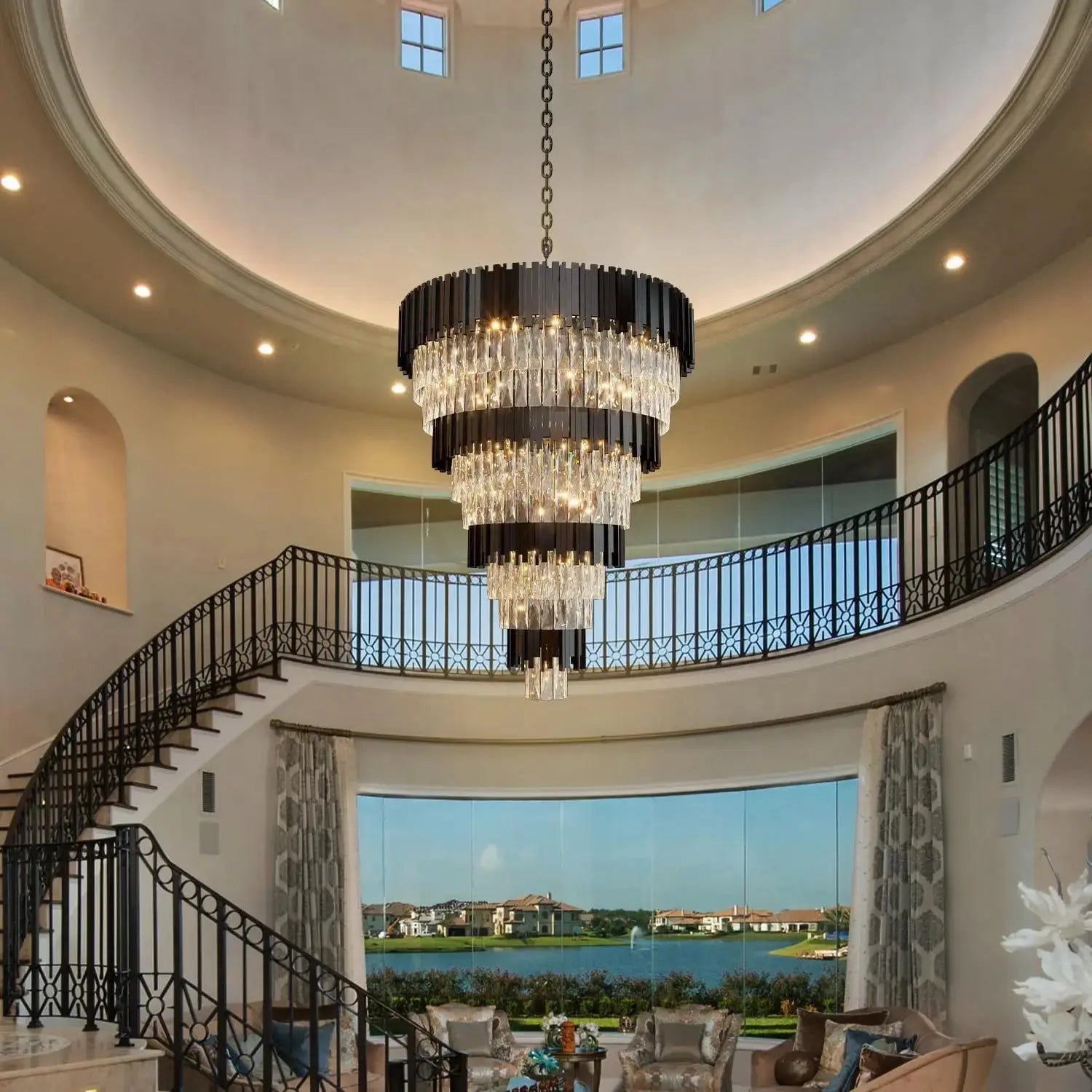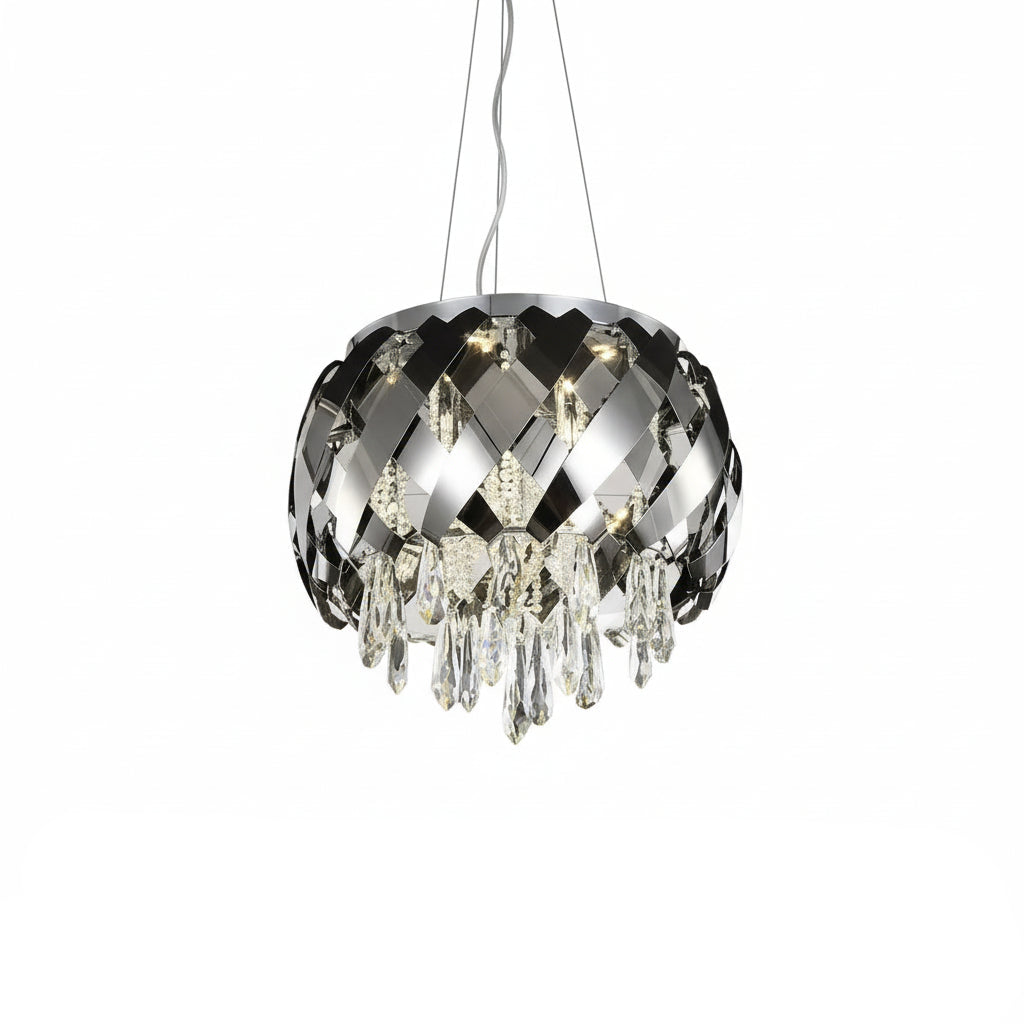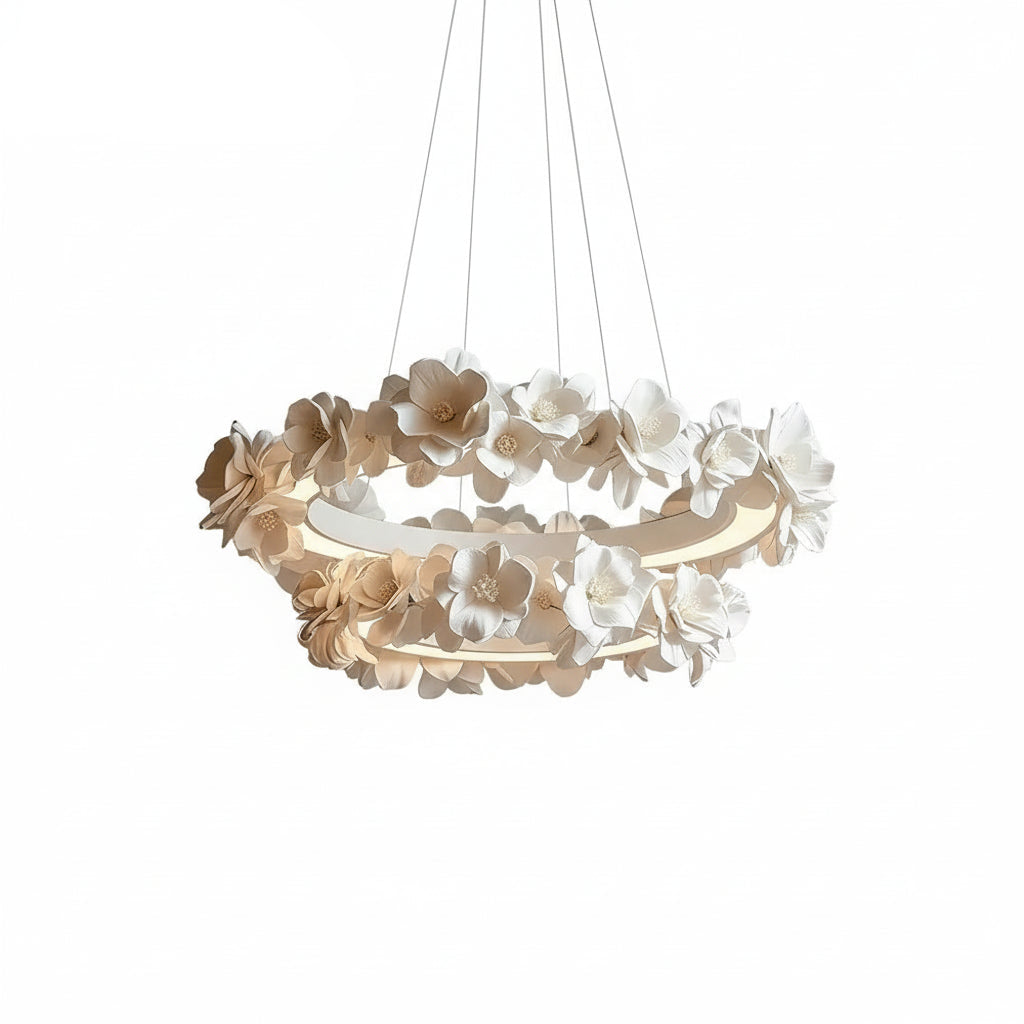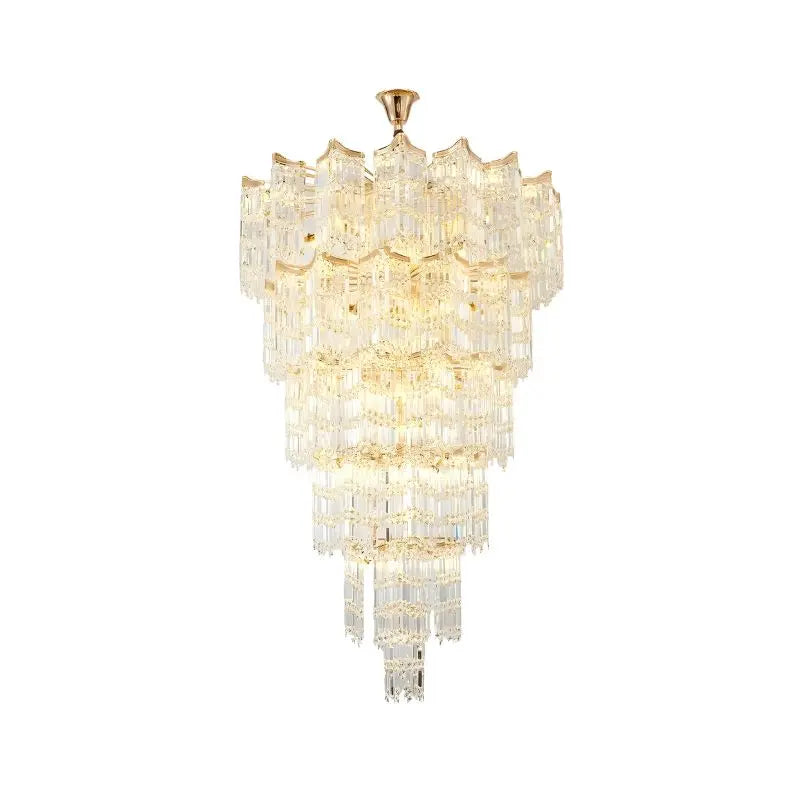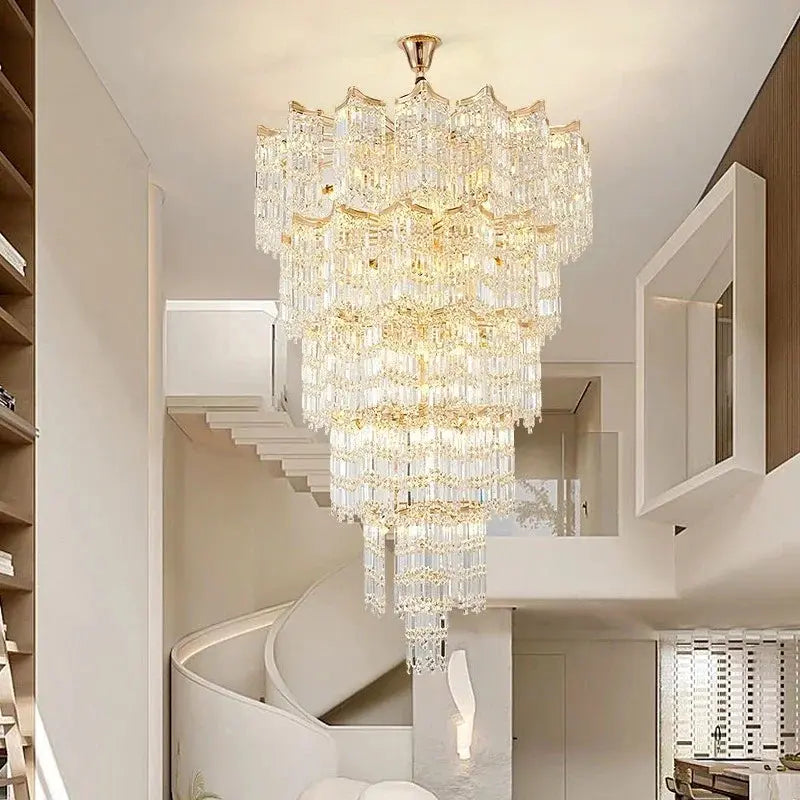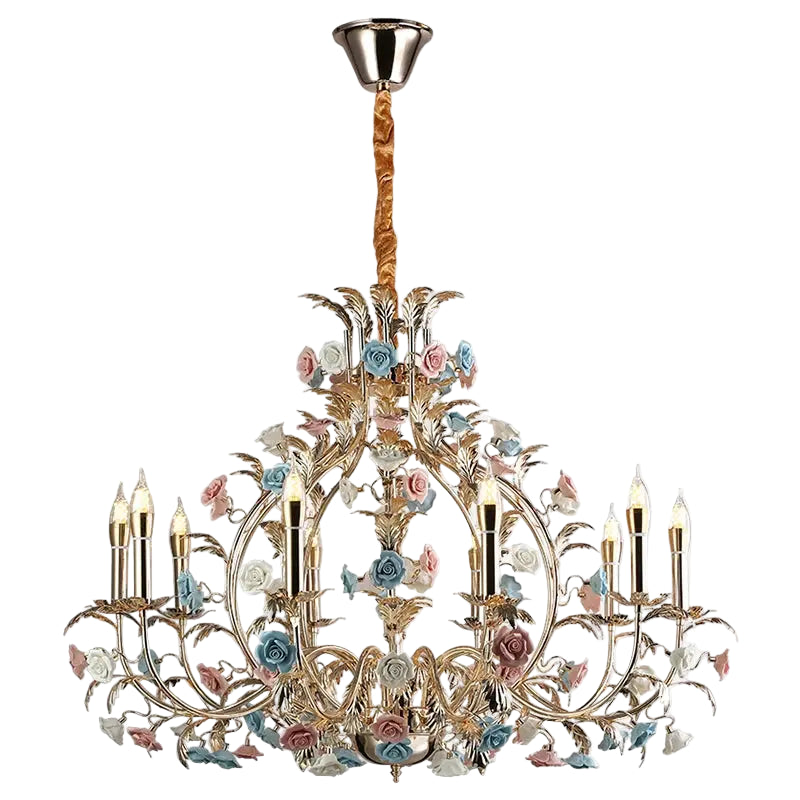Picking out the right hanging dining room lights can really change how your whole dining area feels. It's not just about brightness; it's about setting a mood and making a statement. This guide will walk you through the process, from figuring out what works for your room to choosing styles and materials that fit your taste. We'll cover everything you need to know about selecting the perfect dining table hanging lamp.
Key Takeaways
- Think about your dining space's size and what's already in it before you pick a dining table hanging lamp.
- Look at different lighting styles, from modern to rustic, to find what you like best.
- The materials used for a dining table hanging lamp matter for both how they look and how long they last.
- Make sure the size and hanging height of the light fixture fit well with your dining table.
- Consider the kind of light you need and if features like dimmers would be useful.
Understanding Your Dining Space's Needs
Before you even start looking at pretty lights, let's talk about your dining room. Picking out a hanging lamp isn't just about making things look nice; it's about how you actually use the space. Think of it like choosing a centerpiece – it needs to look good, sure, but it also has to work with everything else. Getting this part right means less hassle later on.
Evaluate Lighting Needs Based on Usage
So, what goes on at your dining table? Is it just for eating, or is it the command center for homework, work projects, and family chats? If kids are doing homework, you'll want bright, focused light. For romantic dinners, softer, moodier light is the way to go. Knowing how you use the table helps figure out what kind of light you actually need.
- Everyday Meals: Bright, even light for visibility.
- Family Gatherings: Good general illumination for conversation.
- Homework/Projects: Focused, task-oriented light.
- Romantic Dinners: Soft, dimmable light for ambiance.
Consider Adaptability and Ease of Use
Do you want a light that can do it all? Dimmable lights are super flexible. You can crank them up for bright, functional light when needed, or dim them down for a cozy vibe. This adaptability means your light can work for any occasion, from a lively family dinner to a quiet evening for two. It's about having control over the atmosphere.
Having a light that can change its mood with a simple adjustment makes a big difference in how you feel in the room. It’s not just about seeing; it’s about creating the right feeling for whatever you’re doing.
Achieve Balance with Size and Proportion
This is where things get practical. A giant chandelier in a small room can feel overwhelming, and a tiny pendant over a big table can look a bit lost. It's all about balance. A good rule of thumb is to measure your table's length and width. Then, aim for a fixture or a group of fixtures that span about half to two-thirds of the table's length. For example, on a 60-inch long table, a fixture or arrangement spanning around 30-40 inches often looks just right. Getting the proportions correct helps your dining area feel cohesive and well-put-together. You can find customizable options to fit your specific table dimensions perfectly.
Key Considerations For Hanging Dining Room Lights
Picking out the right hanging light for your dining room is a big deal. It's not just about brightness; it's about setting the mood and tying your whole space together. Let's look at some popular styles that can really change how your dining area feels.
Selecting The Perfect Style
When you're picking out a light fixture, the first thing to think about is how it fits with everything else in your dining room. Does your place have a modern vibe with clean lines, or is it more cozy with rustic touches? Your light should feel like it belongs. For a modern look, think about fixtures with simple shapes and materials like metal or glass. If you're going for a farmhouse feel, wood or wrought iron might be better. It's not just about what's trendy; it's about what makes your space feel right to you.
Determining The Ideal Height
Getting the height right is super important. Too high, and the light won't do much for the table. Too low, and people might bump their heads or feel like the light is in their face. A good general rule is to hang the bottom of the fixture about 30 to 36 inches above your dining table. This usually gives enough clearance and puts the light right where you need it for meals.
Here's a quick guide:
| Feature |
|---|
| Standard Dining Table Height |
| Ideal Fixture Clearance |
| Total Height from Floor |
Understanding Room and Ceiling Height Impact
Before you even start browsing for that perfect pendant or chandelier, let's get real about your dining room. Picking out a light fixture isn't just about aesthetics; it's about function and how it fits into your life. Think of it like choosing a centerpiece for your table – it needs to look good, but it also needs to work with everything else. Getting this part right makes the whole process smoother and helps you avoid those "oops, this doesn't quite work" moments later on.
Assessing Room Dimensions For Hanging Dining Room Lights:
This is where we get a bit practical. You need to know the size of your dining room and, more importantly, the size of your dining table. A light that's too big can overwhelm a small room, making it feel cramped. On the flip side, a tiny pendant over a huge table can look a bit lost and won't provide enough light. It's all about balance. A good rule of thumb is to measure your table's length and width. Then, subtract about 12 inches from each measurement. This gives you the ideal diameter for a single pendant or the total span for multiple fixtures. For example, a 60-inch long table might do well with a fixture or group of fixtures that span about 48 inches.
| Table Dimension | Ideal Fixture Span |
|---|---|
| 48" x 36" | 36" |
| 72" x 40" | 60" |
| 96" x 48" | 84" |
Considering Existing Decor For Your Lighting Choice:
What's already in your dining room? Take a good look at your furniture, the colors on the walls, and any other decor pieces you have. Your new light fixture should play nicely with what's already there. If you have a lot of dark wood furniture, a light with warm metal tones like brass or bronze might look great. If your room is very modern with clean lines and neutral colors, a sleek, minimalist fixture would fit right in. You don't want the light to clash; it should feel like a natural extension of your room's personality. Think about the overall vibe you're going for – is it cozy and inviting, or more formal and sophisticated?
Also, think about the ceiling height. A very low ceiling might mean you need a more flush-mount style or a pendant with a shorter drop. Conversely, high ceilings can handle larger, more dramatic fixtures, or even multiple tiers of lighting. Don't forget about the light distribution too. Shades that direct light downward can hang nearer to the table than uplighters. The fixture shouldn't obstruct views or conversation; give enough headspace by elevating the light fixture. This can also create an impression of more open space.
Choosing The Right Dining Table Hanging Lamp

Picking out the right hanging light for your dining room is a big deal. It's not just about brightness; it's about setting the mood and tying your whole space together. Let's look at some popular styles that can really change how your dining area feels.
Fixture Size and Table Proportions
This is where things get really important. You don't want a light that overwhelms your table, or one that looks too small and lost. A good rule of thumb is that your light fixture shouldn't be wider than about half to two-thirds of your dining table's width. This keeps things balanced.
- For rectangular tables: Consider a linear chandelier or a series of two or three smaller pendants spaced evenly. This follows the length of the table nicely.
- For round or square tables: A single, central pendant or a round chandelier often works best. It draws the eye to the center and provides even light.
- General Guideline: Measure your table's width and then look for fixtures that fall within that 50-66% range.
Getting the scale right is key to making your dining area feel cohesive and intentional. It's about creating a visual harmony between the light and the furniture below.
Ceiling Height and Fixture Placement
Your ceiling height plays a huge role in how low you can hang your light and how it will look. You want the light to be functional without being in the way.
- Standard Ceilings (8-9 feet): Aim to hang the bottom of the fixture about 30 to 36 inches above the tabletop. This usually provides enough head clearance for most people.
- High Ceilings (10+ feet): You can go a bit lower with the fixture, or use a longer chain or rod to bring it down to that 30-36 inch sweet spot. If the fixture is too high, it won't light the table effectively.
- Low Ceilings (under 8 feet): Opt for more flush-mount options or fixtures with a very low profile. You might need to hang it slightly higher, around 36-40 inches, to avoid bumping heads.
Table Size and Lighting Layout
Beyond just the width, think about the overall size and shape of your table and how people will be using the space.
- Small Bistro Tables: A single, delicate pendant can be perfect here. It adds a touch of style without taking up too much visual space.
- Large Dining Tables (8+ people): You might need more than one light source. This could be a long chandelier, a series of pendants, or even two smaller chandeliers placed strategically.
- Irregularly Shaped Tables: Consider how the light will fall on all parts of the table. Sometimes, a slightly off-center placement can work if it better illuminates the entire surface.
Don't forget about dimmers! Being able to adjust the light level is fantastic for setting different moods, from bright and functional for weeknight dinners to soft and cozy for special occasions.
Exploring Different Dining Table Hanging Lamp Styles
Picking out the right hanging light for your dining room is a pretty big deal. It's not just about making things bright; it's about setting the whole mood for your space and making sure it feels just right. Your light fixture is like the crown jewel of your dining area, so let's look at some popular styles that can really change how your dining area feels.
Single Pendant Lights
These are probably the simplest and most common choice. A single pendant is basically a light fixture that hangs down from the ceiling on a cord, chain, or rod. They're fantastic for smaller dining tables or for a more minimalist look. Think of it as a focused spotlight for your meals. You can get them in tons of shapes and sizes, from sleek, modern orbs to more industrial-looking metal shades. A single pendant is a great way to add a touch of style without overwhelming the space.
Cluster Pendant Arrangements
If you have a longer dining table or a larger space that feels a bit empty, a cluster of pendants can be a real showstopper. This involves hanging several pendant lights together, often at slightly different heights, to create a dynamic visual effect. It's a way to fill a bigger area and add more light without resorting to a massive, single fixture. You can mix and match different pendant styles within the cluster for an eclectic vibe, or keep them uniform for a more cohesive look. It's a bit more playful and can really draw the eye.
Linear Chandeliers
Linear chandeliers, also sometimes called rectangular or island chandeliers, are designed to span the length of a table. They're perfect for rectangular dining tables because they provide a wide spread of light that covers the entire surface. Unlike traditional chandeliers that hang straight down, these are elongated. They offer a more modern and streamlined look compared to a classic chandelier, but still provide that sense of occasion. They come in various designs, from minimalist bars with integrated LEDs to more elaborate arrangements of multiple lights.
Expert Tips for Dining Table Hanging Lamp Placement
Alright, so you've picked out a killer light fixture, but now comes the tricky part: where exactly do you hang it? Getting the placement right makes a huge difference, not just for how the room looks, but for how it feels when you're actually using the space. It’s not just about sticking it in the middle and calling it a day.
Optimal Hanging Height Guidelines
This is probably the most important detail. You don't want people bumping their heads, and you also don't want the light to be so high it feels like it's not even doing anything for the table. A good rule of thumb is to have about 30 to 36 inches of space between the bottom of your light fixture and the surface of your dining table. This usually works out well for standard table heights and gives you enough clearance. If you have super high ceilings, you might need a longer chain or rod to get it down to that sweet spot.
Here’s a quick breakdown:
- Standard Dining Table Height: Around 30 inches
- Ideal Clearance Above Table: 30-36 inches
- Total Height from Floor (approx.): 60-72 inches
Keep in mind, this can shift a bit depending on the size of your fixture and how much light you need. For instance, a fixture with a shade that directs light downwards can often hang a little lower than one that spreads light all around.
Centering vs. Asymmetric Placement
Most people think you have to hang a light right in the dead center of the table. And yeah, that works, especially for smaller, square, or round tables. It creates a nice, balanced look. But don't feel like you're stuck with that! For longer, rectangular tables, or if you just want to add a bit of visual interest, an off-center placement can be really cool. You could hang a chandelier a bit closer to one end, or even use two smaller lights spaced out over the table. It breaks up the monotony and can make the whole setup feel more dynamic. Just make sure whatever you choose still lights up the whole table surface evenly.
Sometimes, the most interesting designs come from breaking the rules. Don't be afraid to experiment with placement to see what looks best in your unique space.
Considering Seating Arrangements
Think about who's actually sitting at your table. If you have a big, boisterous family or you love hosting dinner parties, you want to make sure the light isn't getting in anyone's eyes. A fixture that hangs too low can make it hard to see the person across from you, which is pretty awkward when you're trying to have a conversation. You want enough headroom so people can comfortably see each other and move around without feeling cramped. This also helps the room feel more open and airy. If you're using a fixture with a dimmer, you can adjust the brightness depending on the occasion – bright for homework, dim for a cozy dinner.
Enhancing Atmosphere with Your Dining Table Hanging Lamp

So, you've picked out the perfect lamp, figured out the size, and got it hanging at just the right height. Awesome! But the lamp isn't just about seeing your food; it's a major player in how your dining room feels. It sets the mood, you know? Think about it – a bright, stark light is great for doing homework or sorting mail, but for a nice dinner with friends? You probably want something a bit softer, maybe even a little romantic.
The Role of Light in Perception and Mood
Light really changes how we see things, and not just visually. The color temperature of your bulbs can make a room feel warm and cozy or cool and formal. Warm white bulbs (around 2700K) are usually best for dining areas because they create a welcoming vibe. Too much blue light, like from a super bright, cool white bulb, can make things feel a bit sterile and less inviting. It's like the difference between a sunny afternoon and a cozy evening by the fire.
Creating Ambiance with Dimmable Options
This is where dimmers become your best friend. Seriously, if your dining lamp doesn't have one, consider adding a dimmer switch. It's a total game-changer. You can go from bright enough to read the menu clearly to a soft, moody glow perfect for date night, all with a simple slide or turn. It gives you so much flexibility to match the lighting to the occasion.
Here's a quick look at how dimming levels can change the feel:
| Dimmer Setting | Approximate Brightness | Mood Created |
|---|---|---|
| 100% | Very Bright | Functional, task-oriented |
| 75% | Bright | General illumination |
| 50% | Medium | Comfortable, conversational |
| 25% | Dim | Cozy, intimate, relaxed |
| 10% | Very Dim | Romantic, ambient |
Balancing Aesthetics and Functionality
It's all about finding that sweet spot. You want a lamp that looks good and fits your style, but it also needs to work. Does it provide enough light for when you need it? Does it cast shadows in weird places? Sometimes, you might need to layer your lighting. Maybe your hanging lamp is the main event, but you also have some subtle wall sconces or even a floor lamp in the corner. Combining these different light sources lets you really fine-tune the atmosphere. It’s not just about one lamp; it’s about how all the lights in the room work together to create the perfect dining experience.
Don't forget about the bulbs themselves. The style of the bulb, like an Edison bulb with its visible filament, can add a lot to the look and feel, even before you turn the light on. It's these little details that really pull the whole look together and make your dining space feel special.
Wrapping It Up
So, picking out the right hanging lights for your dining room is a pretty big deal. It's not just about making things bright; it's about setting the whole mood for your space. We've gone over how to think about your room's size, what style fits your vibe, and how to get the height just right. Remember, the goal is to make your dining area a place where you and your guests feel comfortable and happy, whether you're having a fancy dinner or just a weeknight meal. Don't be afraid to play around with different ideas until you find that perfect fixture that makes your dining room truly shine.
Frequently Asked Questions
What's the best height to hang a light over my dining table?
You want the light to be high enough so no one bumps their head, but low enough to shine light on your food. A good rule is to hang the bottom of the light about 30 to 36 inches above the table. This might change a little depending on how big the light is and how tall your ceiling is.
How do I pick the right size hanging light for my table?
Think about your table's shape and size. For a long table, a long light or a few smaller ones work well. For a round table, one round light or a chandelier is a good choice. Generally, the light shouldn't be wider than about half to two-thirds of your table's width.
Does my dining room light have to match my other decorations exactly?
Not exactly, but it should look like it belongs. If your room has a modern style, a simple, sleek light will fit in nicely. If it's more traditional, a fancy chandelier might be better. The light should go well with your style, not stick out like a sore thumb.
What's the difference between general light and task light in a dining room?
General light, also called ambient light, is the soft light that fills the whole room. Task light is more focused, like the light that shines right on your food and table. For dining rooms, you usually want both. A dimmer switch is great for changing the mood.
Are lights with dimmer switches useful for a dining room?
Yes, they are super useful! Lights with dimmers are awesome for dining rooms. You can make the light bright for everyday meals or parties, and then dim it down for a romantic dinner or a relaxed evening. It really helps set the right mood for any occasion.
Can I install a hanging light myself, or should I hire someone?
If you're comfortable with basic electrical work and have the right tools, you might be able to do it yourself. But for safety and to make sure it's done correctly, hiring an electrician is often the best idea, especially for heavy lights or if you're unsure about the wiring.


